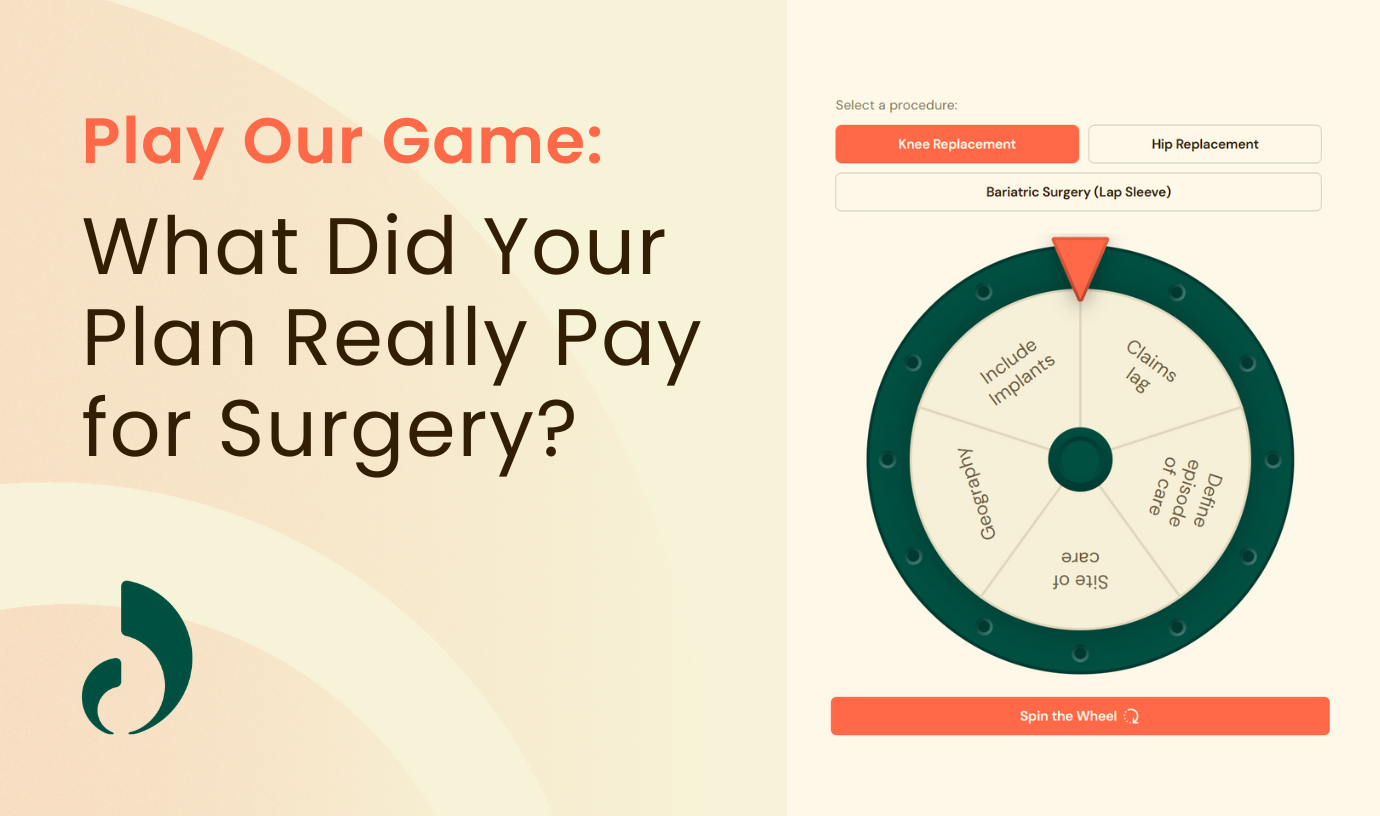It’s a wrap! During Lantern’s three 2025 Specialty Care Summits, some of the most innovative benefits leaders and thought leaders came together to discuss and debate pressing and trending employer health topics.
Across the three cohorts there was a lot of spirited debate around how employers are facing historic healthcare price increases and aggressively looking at solutions to reduce costs without sacrificing quality healthcare for employees. Seeing how much these leaders care about their responsibility and dedication to their employees was really special.
For the attendees, it’s a time to network, reflect and think outside the box to develop fresh strategies as they move into this year and beyond. Here are some of the trending employer health topics we discussed during the summit, plus a few tips and takeaways to help you plan your benefits strategy:
Fiduciary Responsibility is Top of Mind
Self-funded employers will continue to face tough scrutiny from the new administration regarding their fiduciary responsibility as plan sponsors, according to Manatt Health’s Michael Kolber and Nick Bath. Both employee class-action and individual lawsuits are a real concern, like the recent employee case against Johnson & Johnson regarding the mismanagement of health benefit plan funds.
During the discussions, there were some great suggestions around ways to shore up governance internally, such as fiduciary training, personal liability protections, creating benefits committees, leveraging consultants for an extra review, and more consistent vendor reviews and evaluation, including audits. Here are some next steps HR and benefits leaders can take:
- Strengthen fiduciary oversight: Prioritize strengthening oversight of healthcare vendors, including conducting thorough RFPs and ensuring that plan sponsors are acting in the best interests of plan participants.
- Prepare for cost pressures: Prepare for continued cost pressures on healthcare benefits. This may involve exploring cost-containment strategies, such as value-based care and wellness programs.
- Consider solutions that make financial sense for you and employees: To improve quality and control costs, explore solutions to address healthcare challenges that don’t increase member cost share, such as direct contracting, Centers of Excellence and specialty care platforms.
Clinical Quality + Appropriateness is Key When Vetting Healthcare Solutions
To truly measure and improve care quality, you have to broaden the definition to include what people should expect from healthcare. Safety and effectiveness matters, but so does patient-centeredness, timeliness, efficiency and equity. To ensure high-quality surgical outcomes, it’s important to rigorously vet surgeons, not just facilities. “The quality of an individual surgeon matters,” said Jason Tibbels, MD, Lantern Chief Medical Officer. “It’s not enough to bring them into our network and hope they do good things. We’ve got to continually assess them.”
Alan Davis, MD, an orthopedic surgeon and a part of Lantern’s Medical Advisory Board, said high-quality surgeons should welcome scrutiny and be proud to demonstrate their adherence to rigorous standards. “The best surgeons are also the ones who have set up the best process around them,” he said. “Surgeons need to prioritize appropriate patient care and establish efficient, patient-centered processes.”
Tibbels also shared how Lantern’s exclusive partnership with Global Appropriateness Measures (GAM) allows us to strengthen our network and deliver even higher rates of surgical avoidance, better site of care decisions and reduced complications. “It’s important we avoid unnecessary procedures,” Tibbels said.
The quality of an individual surgeon matters. It’s not enough to bring them into our network and hope they do good things. We’ve got to continually assess them.
Measure Program Effectiveness When Evaluating HR Solutions
With employers averaging 25 point solutions in their benefits ecosystem, it’s easy to see why a framework to evaluate what’s working is so valuable. Benefits leaders need to focus on solutions that will move the needle for their population. But as Ellen Kelsay, Business Group on Health President & CEO, admits: “There’s no universal standard for measuring ROI.”
Pierce Graham-Jones has spent years evaluating vendors from his early days at HHS to Castlight and now as Marathon Health’s Chief Product & Strategy Officer. He’s found a ton of value in using this framework to determine the metrics that will hold partners accountable: engagement, behaviors, leading outcomes and lagging outcomes.
When looking at vendors, determine what problem you’re trying to solve, what population the solution is for (i.e., people with diabetes), and what are the success metrics to focus on.
Claire Brockbank, Director of Policy & Strategy for 32BJ Benefit Funds, a labor union with more than 300K members, says data is critical. “We model all of our own data and document the success metrics before we launch. We figure out what we can expect at 6,12,18 months and look for milestones to give us the green light to keep going [with a vendor].”
And sometimes you have to cut your losses and move on when a solution doesn’t work for your population, said Meg Barron, Managing Director of Engagement and Outreach at Peterson Health Technology Institute. “Admitting defeat early is better than delaying the decision.”
Check out Framework for Benefits Leaders to Evaluate Point Solutions for specific questions and tips.
Ensure Cost Transparency with Employer Healthcare Solutions
With so many point solutions, benefits leaders are trying to determine which are actually delivering hard-dollar savings. “It’s a nightmare because everyone defines and calculates metrics differently,” said one of the Fortune 500 benefits leaders during our summit.
That’s why Lantern made our savings methodology public—and encourages others in the industry to do the same.
We’re now partnering with clients, actuaries and consultants to push our framework into the data warehouses. As Lantern CEO John Zutter said, “If you don’t know where you’re spending money, you can’t make good decisions how to spend it.”
Radical Transparency Leads to Radical Change
Learn how Lantern’s savings methodology fixes the 7 biggest flaws in traditional healthcare claims analysis.
Drug Developments: Don’t Ignore Tomorrow’s Problem
Overall pharmacy spend, including GLP1-s, continues to be top of mind, but with increasing demand for Cell & Gene Therapy, employers need to have a proactive plan. As John Puccio from Ferguson summarized the forecast of CGTs: “It’s the real CAT 5 hurricane” of the future for benefits leaders.
With drug developments speeding up at a serious pace, Dickon Waterfield, President of Lantern, noted this problem isn’t going away. And Luke Prettol, Principal Benefits Strategy Consultant at AT&T, said now is the time to start building a good strategy. They ask three questions around CGT risk: Is it right for the patient? Is it the right provider? And is it the right price?
“And we go in that order,” Prettol said. “Because if you get the wrong patient, you’ve just wasted all your money. If it’s not the right provider and they do it wrong, you can’t do it again, and you just blew your money and any chance that person gets better.”
Read the full blog: Why Employers Can’t Ignore Cell and Gene Therapies
Change is also coming in the PBM world: many Lantern clients are currently out to bid for new PBM partners, including outside the big 3. Employers can consider proactively stating their intent to carve out drug classes or CGT drugs to have more flexibility in the future.
Top Considerations with Mandatory Plan Design
Employer interest in mandatory plan design surged by 4X in 2024, with 50% of Lantern’s new clients adopting it. It can be challenging, but effective execution—including communication, carrier integration, and claims-based outreach—can yield $50+ PEPM savings.
“You’re chasing some serious cost expectations and savings, and mandatory plan design is a very good way to get it,” said Dickon Waterfield, President of Lantern.
They do, however, require early engagement and clear communication with employees to ensure awareness and minimize pushback. Throughout our specialty care summit, benefits leaders shared advice for those considering a mandatory plan:
- Develop a modern communications strategy: Educate employees about the program, its benefits, and any requirements or options through every channel you can. Be prepared to address concerns—and repeat yourself often
- Implement gradually (if possible): Consider a phased approach, starting with specific procedures or offering choices initially, to ease the transition.
- Monitor and measure: Track program utilization, cost savings, and member feedback to assess effectiveness and make adjustments as needed.
Year-Round Communication Strategies are Key to Effective Engagement
It’s not enough to promote your benefits during open enrollment. A continuous, year-round strategy is crucial. You must think like a marketer (or work with your internal communications team) to develop a strategy and build plan awareness.
Creating a personalized and targeted communications approach is key to success. As one benefits leader noted: “We have to be hyper-personalized and relevant so that we’re actually getting their attention.”
To drive utilization of your benefits, you also must create a positive employee experience. Here are some of the key takeaways we discussed and next steps for HR and benefits leaders to effectively implement and communicate your benefits programs:
- Develop a comprehensive communication strategy: Create a year-round, multi-channel communication plan that targets employees at work, at home, and spouses/family covered under the plan.
- Measure engagement: Monitor engagement metrics to assess the effectiveness of communication strategies and make data-driven adjustments.
- Consider innovative engagement tactics: Explore creative ways to engage employees, such as gamification, contests, and personalized incentives.
COE Engagement Playbook: Key Incentives to Try

As you plan your benefits strategy for the future, what other key elements are top of mind? We know we’ll continue to see rising healthcare costs and that you truly do want to provide the best experience for our employees. We urge HR teams, benefits leaders and consultants, and thought leaders to rally together to innovate. And as always, we’d love for you to share your ideas with us!
Connect with us on LinkedIn




